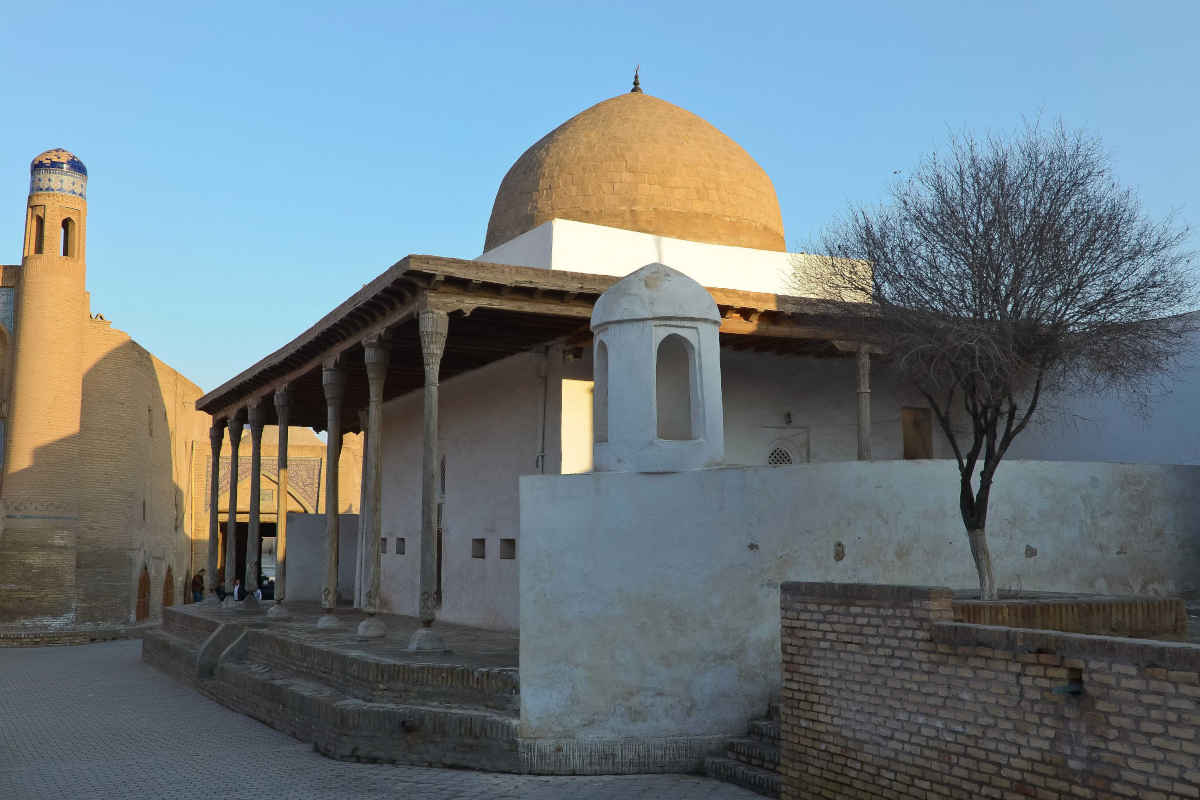Khiva - Ak Mosque
The Ak-Mosque, also called the White Mosque, is located at the eastern gate of Ichan-Qala city centre in Khiva. It is a small building, the so-called “neighbourhood mosque” (a type of mosque built for visiting residents of a neighbourhood).

The foundation of the building was laid in the XVII century under the Anush-khan and the present building was rebuilt in 1838 – 1842. The Ak-Mosque is a typical example of neighbourhood mosques, usually built for the population of a small “micro-district” of Khiva, known as Mahalla or Guzar.
The central domed chamber – Khanaqa (6,Z5 õ 6, 35 m) is surrounded on three sides by tall multi-columned aiwans. In the depth of the southern walls of Khanaka and Aywans are mihrab niches.
The special attraction of the mosques are the wooden pillars – the narrow columns, the bases with graceful carvings. The carved doors on which the names of the masters – Usta Nurmuhammad and Usta Qalandar – are inscribed are also interesting.
The name Ak Mosque (“White Mosque”) refers not only to the Gantsch coating on the walls of the building, but also to its paramount importance among the small mosques in the neighbourhood.
Probably this name remained from the previous mosque built under Anush-Khan, the remains of which are preserved under the walls of the new building. The main prayer room is in the winter building of the mosque, crowned by a white dome.
The carved finials of the mosque doors, openwork window grilles, wooden columns with carved plinths are interesting. As a whole, the Ak Mosque represents one of the patterns of Central Asian architecture. The names of the masters can be read in the carvings on the doors of the mosque.
